How to Fill a Vape Cartridge with Distillate
This article is designed to guide you through the essentials of preparation, provide a step-by-step method for filling vape cartridges, and highlight the most common mistakes to avoid when using tools such as a syringe or a vape pen filling machine.
What You Need Before You Start: Semi Automatic Vape Cartridge Filling Machine Essentials
If you’re planning to fill vape cartridgeswith distillate, the first step is preparation. Distillate is thick and sticky, so working with it successfully requires the right tools, a clean workspace, and an understanding of how equipment choices affect the final product. Taking the time to set up properly will save you frustration later and lead to more reliable results.
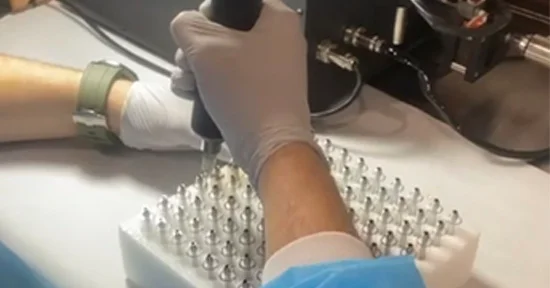
The most critical item you’ll need is a filling tool. A simple syringe can work if you’re only filling a few cartridges at a time, but hand-filling quickly becomes inconsistent as production grows. This is where a semi automatic vape cartridge filling machine or a professional vape pen filling machine becomes essential. With precise dosing, these machines make it easier to achieve consistent fill volumes, minimize waste, and handle larger batches without sacrificing quality.
Cartridges themselves are just as important. Because distillate is highly viscous, you’ll want to use well-made cartridges designed specifically for thicker oils. Ceramic cores and durable glass bodies are common features of high-quality options, helping to maintain flavor integrity and prevent leaks. Using low-grade cartridges often leads to clogging, leaks, or poor vapor performance, no matter how carefully you fill them.
A dependable heat source is another must-have. Gentle warming—through a warm water bath or a cartridge heater—lowers the viscosity of distillate so it flows smoothly into the cartridge. The key is moderation: too much heat risks degrading cannabinoids and terpenes, which directly impacts potency and flavor.
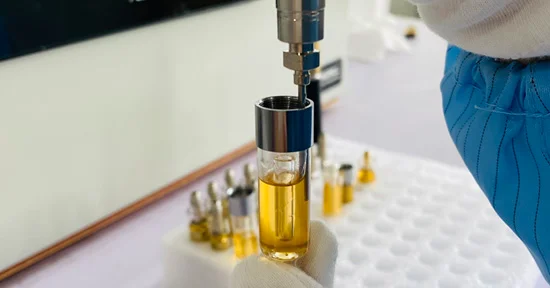
Finally, don’t neglect hygiene. Cleanliness is crucial, whether you’re filling a handful of cartridges or running a small production line. Wearing gloves and wiping down each cartridge with alcohol ensures that the oil stays uncontaminated. Treating your setup like a food-grade workspace not only protects the product but also builds trust with customers.
When you have the right equipment and preparation, the entire process becomes more straightforward. Whether you’re starting small with syringes or scaling up with a semi automatic filling machine, careful preparation ensures that each cartridge is consistent, clean, and ready to deliver a smooth vaping experience.
Step-by-Step Guide: How to Fill a Vape Cartridge with Distillate
Filling cartridges with distillate can look simple, but attention to detail is what separates a clean, professional result from a leaky or inconsistent one. Whether you’re hand-filling with a syringe or working on a semi automatic vape cartridge filling machine or vape pen filling machine, following a structured process will give you accuracy, efficiency, and reliable performance.
Step 1: Warm the distillate
Distillate is naturally thick, so you’ll need to bring it to a workable viscosity before filling. Place the sealed syringe or container in a warm (not hot) water bath, or use a low-temperature heater designed for cartridges and filling systems. The goal is a flow similar to warm honey—easy to dispense but still cohesive. Many operators work in the 40–55 °C (104–131 °F) range, keeping below 60 °C (140 °F) to protect terpenes and cannabinoids. Rotate the syringe occasionally for even heat and avoid shortcuts like microwaves or open flames. If you add terpenes or diluents, stir gently and allow air bubbles to rise before use.
Pro tip: Persistent bubbles often mean your oil is too cold or being agitated. Slow down, re-warm carefully, and let the distillate stabilize.
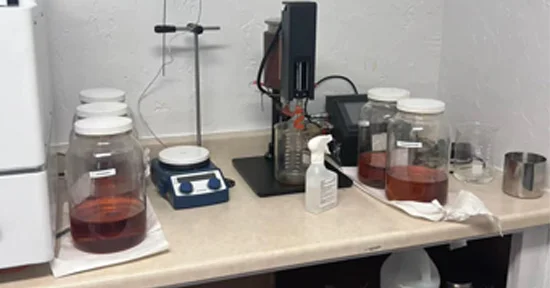
Step 2: Prepare the cartridge
Line up cartridges upright on a clean tray or rack. Inspect each one for cracks, loose posts, or worn O-rings—small defects now will cause big problems later. Wipe the threads and contact points with alcohol and allow them to dry fully. In cooler rooms, pre-warming the cartridges slightly helps the distillate flow in smoothly and reduces thermal shock. Keep mouthpieces or caps close by so you can seal quickly once filling is complete.
Pro tip: Weigh one empty cartridge and use it as a reference. Checking the weight after filling is far more precise than relying only on the sight window.
Step 3: Dispense the distillate
Decide on your target volume—commonly 0.5 mL or 1.0 mL—and verify using syringe markings or by weight.
Syringe method: Attach a blunt-tip needle (14–18 gauge is common). Insert the tip gently along the sidewall, just above the intake holes, and depress the plunger at a steady pace. Keep the needle near the surface of the rising oil to minimize bubbles.
Machine method: If you’re using a semi automatic vape cartridge filling machine or a vape pen filling machine, program the exact dose and set a conservative dispense speed. Purge air from the lines, run a couple of test shots into a waste container, and then start filling. Keep the heated nozzle just above the oil’s surface and pause briefly at the end of each shot to avoid stringing. Recheck calibration every few dozen units to stay consistent.
Pro tip: Whether hand-filling or on a machine, maintaining a steady rhythm is what keeps fills consistent and free of bubbles.
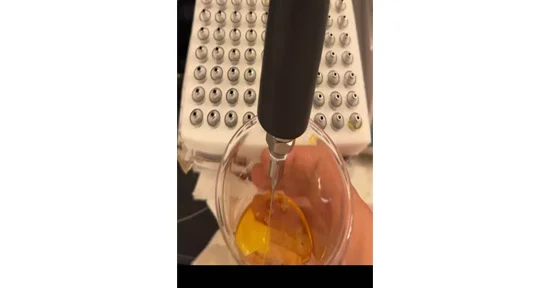
Step 4: Leave headspace
Stop short of the cartridge’s top and leave 1–2 mm of space (or the amount recommended by the cartridge manufacturer). This headspace allows for proper sealing and accounts for thermal expansion. Too little can flood the center post; too much can make the cartridge look underfilled. If you know your cap displaces some oil, adjust your target volume to compensate.
Pro tip: Environment matters. In warmer rooms or higher elevations, a bit of extra headspace can help prevent leakage during storage or transport.
Step 5: Seal the cartridge
Seal while the distillate is still warm and mobile.
Press-fit caps: Use even, downward pressure—ideally with a hand press or arbor press—for a flush seal. Avoid twisting, which can disturb the O-rings.
Screw-on caps: Start the threads gently to avoid cross-threading, then tighten snugly without over-torquing. Excess pressure can crack ceramic or damage seals. Wipe any residue from threads so quality checks remain clear.
Pro tip: A torque-limiting driver or press with depth control ensures every cap is sealed with the same precision.
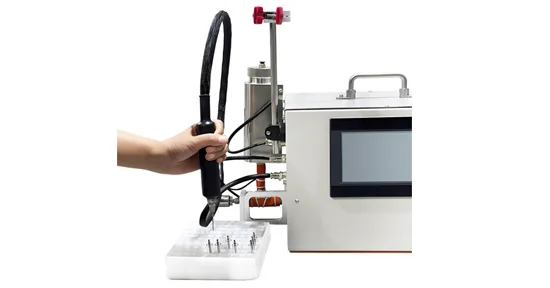
Step 6: Let it settle upright
Once capped, stand cartridges upright and allow them to rest for 20–30 minutes so the oil can settle evenly. A gentle, low-temperature hold can help the distillate wick into the coil. For best results, stage the filled cartridges for 12–24 hours before use or packaging. During this time, check for leaks at the base, trapped air bubbles, and fill-level consistency. Store them upright in a cool, dark place to preserve flavor and prevent clogging.
Pro tip: Create a simple quality-control routine—spot-check by weight, inspect for leaks, and test draw resistance. Small checks here prevent costly mistakes later.
Common Mistakes to Avoid When Filling Vape Cartridges
Even small oversights can compromise an entire batch of cartridges. Whether you are filling by hand or relying on a semi automatic vape cartridge filling machine or vape pen filling machine, paying attention to these details will save you time, money, and product quality.
Overheating the Distillate During Filling
Warming distillate helps it flow, but too much heat can strip away potency and flavor. If your oil turns darker, thins out excessively, or gives off a “burnt” smell, it’s been overheated. The safest approach is indirect heat: a warm-water bath or a low-temp heating system designed for filling equipment. If your machine has heated nozzles, set them conservatively and always verify with an external thermometer. Remember, protecting cannabinoids and terpenes matters more than shaving a few seconds off the process.

Lapses in Sanitation with Filling Machines
Distillate is highly sensitive to contamination. Handling mouthpieces with bare hands, skipping gloves, or filling in a dusty environment increases the risk of leaks, clogs, and off-flavors. Always treat your setup like a food-grade workspace: gloves on, surfaces wiped with alcohol, and cartridges staged in covered trays. When using a vape pen filling machine, clean the syringes, tubing, and nozzles between runs, and change gloves whenever you touch non-sterile surfaces. A few simple habits can preserve both product integrity and consumer trust.
Overfilling and Ignoring Proper Headspace
Filling a cartridge to the brim might seem efficient, but it usually leads to leaks or center-post flooding. Leaving 1–2 mm of headspace allows for mouthpiece displacement and natural thermal expansion during shipping. If you’re using a semi automatic vape cartridge filling machine, calibrate your target volume carefully and confirm by weight rather than by eye. Consistent headspace not only looks more professional but also ensures stable performance for the end user.
Using Cartridges That Aren’t Built for Distillate
Not every cartridge is designed to handle thick oils. Cartridges with poor seals, undersized intake holes, or weak ceramic components often cause clogs, leaks, or dry hits, regardless of how carefully you fill them. Always select cartridges engineered for high-viscosity distillate—those with quality ceramic cores, durable seals, and proper intake sizing. Matching the right cartridge with your vape pen filling machine ensures smooth operation, fewer customer complaints, and better overall product consistency.
Conclusion
By preparing your workspace, following a structured filling process, and steering clear of common mistakes, you can create high-quality vape cartridges with consistent performance. From maintaining the right temperature for distillate to choosing the right cartridge hardware, each step matters.











